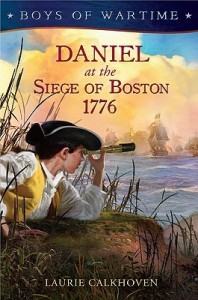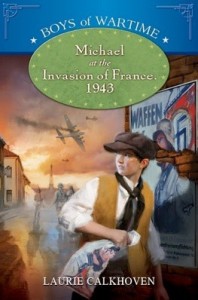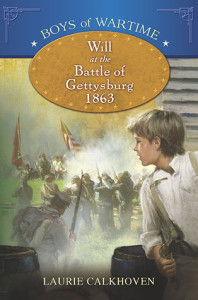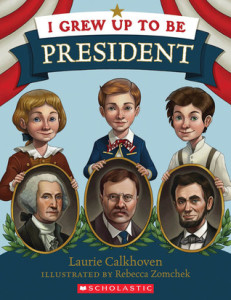“Turning Young Readers on to Historical Fiction” by Laurie Calkhoven
It’s hard to believe that something as small as a broken egg could change the course of American history, but one did. It was March of 1775 and the fifth anniversary of the Boston Massacre. The Sons of Liberty planned a church service at Old South Meeting House to honor the men who had died. All of the leaders of the Sons of Liberty, indeed all Patriots in Boston, would be in attendance.
The Redcoats had a plan to bring the colonial rebellion to an end. They ordered a soldier to go to the meeting and throw an egg at the speaker. An insult like that would start a riot, and they intended to arrest the leaders of the Sons of Liberty—Samuel Adams, John Adams, John Hancock, and the others—and ship them to England to stand trial for starting a riot. The British thought that with the leaders out of the way, those hotheads in Boston would settle down and stop their foolish rebellion.
The reason why you haven’t read about those arrests in your history texts is that the soldier fell on his way to the service. Not only did he break the egg. He hurt his leg so badly that he didn’t make it to the meeting at all. There were no arrests. The rebellion lived on. The next time the Redcoats went after those leaders, war erupted in Lexington and Concord.
That egg incident, one I came across in long out-of-print history of the time period, frames the beginning of my novel Daniel at the Siege of Boston, 1776. Daniel helps foil the British plan and goes on to do much more, but if not for that broken egg, there wouldn’t be a story to tell.
Historical fiction can be a hard sell for young readers. Many of them expect it to be boring. When I visit schools and talk to young readers, I always begin by telling them stories—true stories. Soon they’re hooked. They want to know what happens next.
Kids love wacky facts, and so in my Civil War novel (Will at the Battle of Gettysburg, 1863), I included the fact that on the first night of the battle six-year-old Mary McLean stuck her head out of her window and sang a song to the Confederate soldiers who had taken her town—a song about their President, Jefferson Davis:
Hang Jeff Davis from a sour apple tree.
Mary’s father thought the whole family would be shot, but the Rebel soldiers only laughed and sang their own song about President Lincoln.
My latest Boys of Wartime novel, Michael at the Invasion of France, 1943, is about a boy who helps shot-down and trapped American airmen evade the Nazis in a World War II version of the Underground Railroad. Kids love to hear about all the everyday American habits that gave the men away. Things like walking with their hands in their pockets, or whistling—two things French men never did.
My Boys of Wartime novels are about ordinary boys who get caught up in extraordinary moments in history—they become spies for General Washington, help save the Union, and resist the Nazis. One ordinary person—just like them—and small ordinary moments can change the course of history. I research extensively to fill my novels with real-life action and adventure stories to keep my readers turning the pages.
All kinds weird, wacky, and wonderful stories never make it into our history textbooks. Historical fiction is full of those stories. Once your young readers figure that out, they’ll be back for more.
About the author: Laurie Calkhoven is the author of nearly fifty books for young readers including the Boys of Wartime series and I Grew Up to be President. Find CCSS activities and learn about her school visit program at lauriecalkhoven.com.
Thank you Laurie for your post!





So smart to hook them with the funny, strange and extraordinary! Thanks for sharing.
History is packed full of all kinds of great stories. What an awesome job to be able to share those stories to get kids excited about history.
Your stories sound like great reads! How fun.
Ree